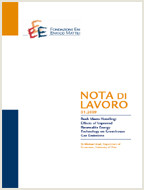What is Different about Government-Controlled Acquirers in Cross-Border Acquisitions?

17.03.2010
G. Andrew Karolyi, Rose C. Liao
G15, G34
Government-controlled Acquirers, Cross-Border Acquisitions
Climate Change and Sustainable Development
Fausto Panunzi
We examine the motives for and consequences of 5,317 failed and completed cross-border acquisitions constituting $619 billion of total activity that were led by government-controlled acquirers over the period from 1990 to 2008. We benchmark this activity at the aggregate country level and also at the deal level with cross-border acquisitions involving corporate acquirers over the same period. We find that government-led deal activity is relatively more intense for geographically-closer countries, but also relatively less sensitive to differences in the level of economic development of the acquirer’s and target’s home countries, in the quality of their legal institutions and accounting standards, and to how stringent are restrictions on FDI flows in their countries. Government-led acquirers are more likely to pursue larger targets with greater growth opportunities and more financial constraints. But, the share-price reactions to the announcements of such acquisitions are not different. Among those deals involving government-controlled acquirers, we do find important differences involving sovereign wealth funds (SWFs). SWF-led acquisitions are less likely to fail, they are more likely to pursue acquirers that are larger in total assets and with fewer financial constraints, and the market reactions to SWF-led acquisitions, while positive, are statistically and economically much smaller. We discuss policy implications in terms of recent regulatory changes in the U.S. and other countries that seek to restrict foreign acquisitions by government-controlled entities.
